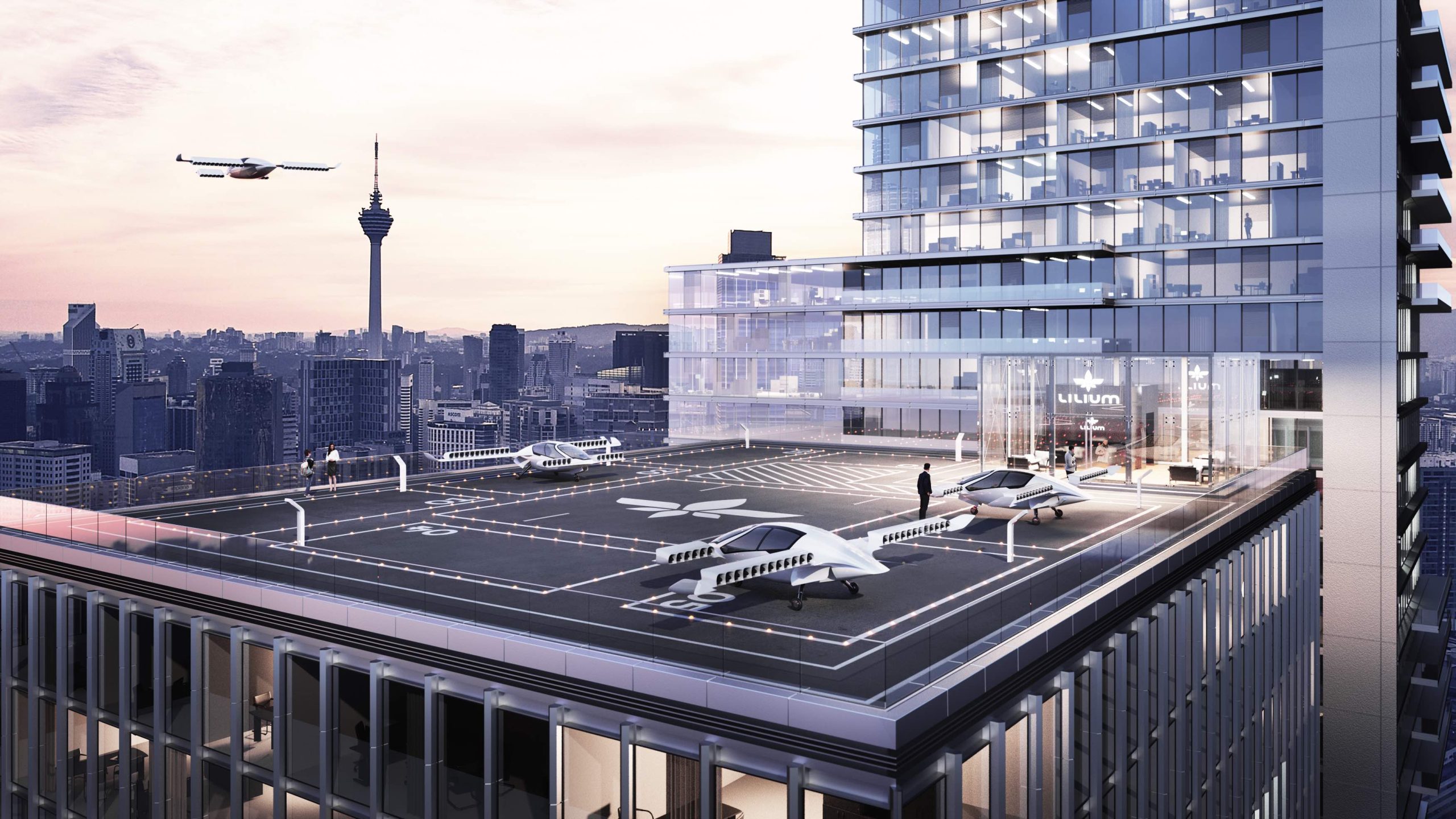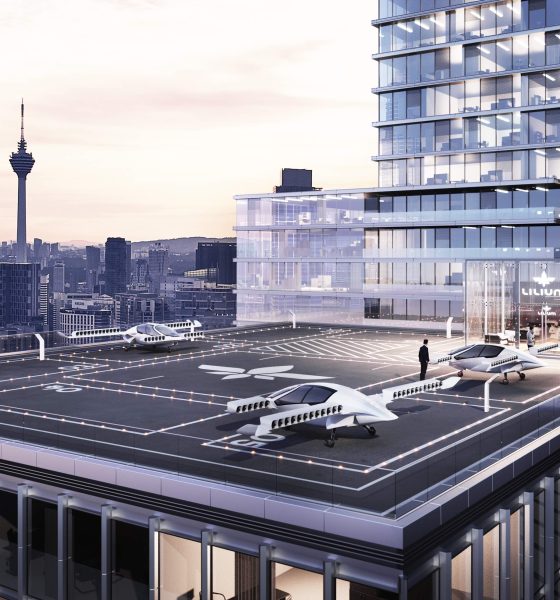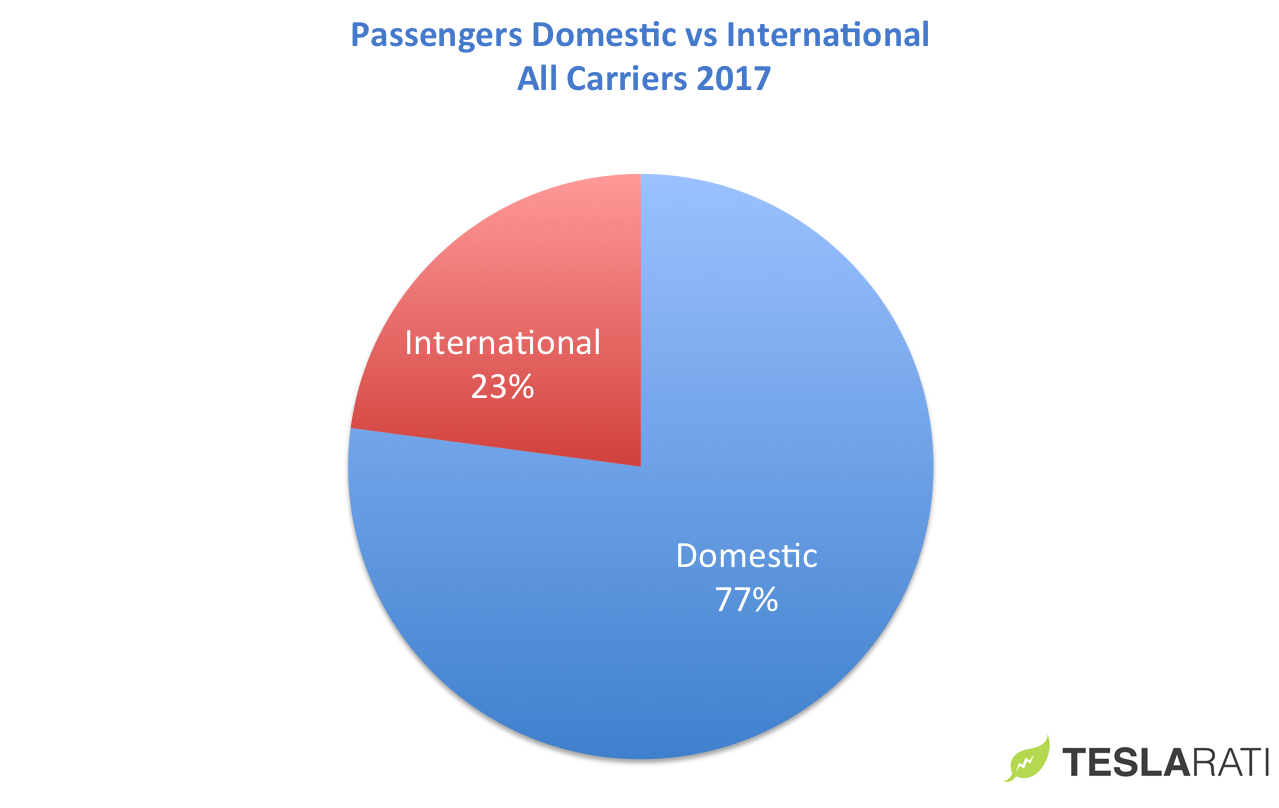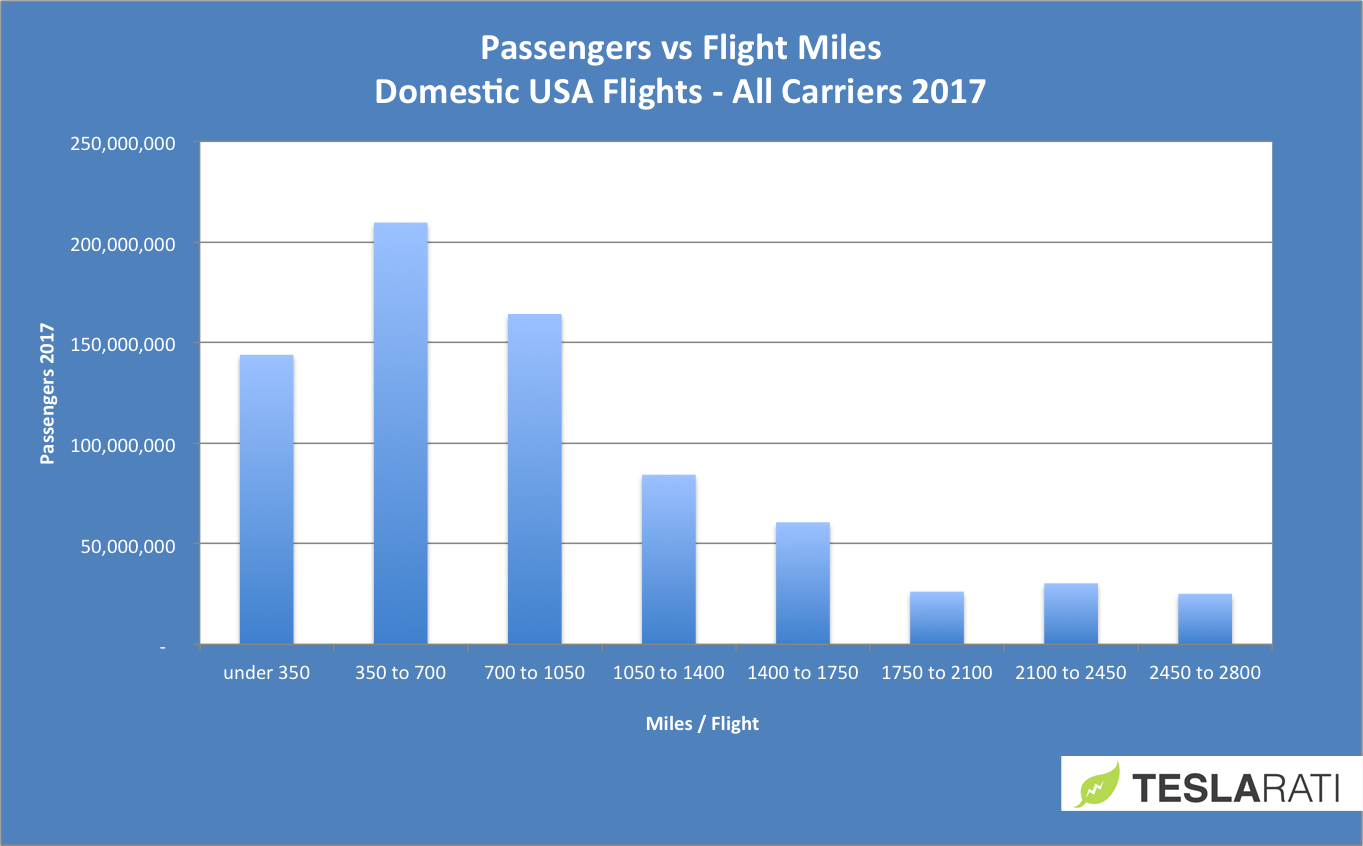

News
Electric aircraft could transform short-distance regional air travel
Whenever the subject of electric aircraft comes up I see the room filled with skeptical looks. The looks are not unwarranted. Even electric cars remain in the low single digits for worldwide market share and electric flight is undoubtedly a greater hurdle. The enemy of flight is weight after all and batteries are rather heavy. The skepticism though, while justified, is misplaced.
The problem is that we tend to think of air transport as large intercontinental craft flying thousands of miles at a time. Those certainly exist and there’s even one that travels 9000 miles, flying 17 hours from Perth to London. The reality for most air travel, however, is somewhat different. Statistics from the US Bureau of Transportation show that the overwhelming majority of US passengers are on domestic flights and what’s more, nearly half of those are under 700 miles.
Source: Bureau of Transportation Statistics – T100 domestic, all carriers

The data graphed above shows that 20% of domestic passengers are flying under 350 miles in the USA, with nearly 50% under 700 miles. Forget about the 9,000 mile international flights, this is the market for electrified flight in the near-term. The aircraft to support it are nearly here.
I’ve written in the past about the various electric aircraft in development from companies like Zunum Aero, Wright Electric, Airbus/Siemens, NASA, Eviation, BYE, and others. It’s still very early but advancement is steady and the age of electric flight is coming. For a moment consider Zunum Aero’s aircraft, the ZA10. It’s a 12-seat hybrid for regional transport, slated to begin test flights next year and deliveries in the early 2020s. The aircraft is targeting a range of 700 miles and will have a shorter range all-electric version. There’s also a larger variant planned.
Zunum Aero’s ZA10

- 60 to 80% reduction in operating costs
- 80% lower emissions and noise
- 40% reduction in runway needs
- Hybrid-electric range of 700 miles
Back to those skeptical looks. The financial driver for electrification is huge, with the potential to reduce operating costs 60 to 80%. More so with carbon pricing. If said hybrid aircraft also create less pollution, require shorter runways, reduce maintenance, and produce less noise, well then which carriers wouldn’t want to use them? Particularly in a regional market which, as noted previously, includes nearly 50% of all domestic flights in the US.
That all seems great, but even this understates the impact of electrification. What’s missing from the analysis is the potential for electric aircraft to fundamentally transform air travel as we know it, to vastly increase the number of flights under 700 miles.
The data we have today shows us the past, but this is the future:
Electric and hybrid aircraft have the potential to open up new regions to air travel, revitalize small neglected airports, create jobs in small communities, and make travel more enjoyable for everyone. This vision will become a necessity if we hope to have a cohesive society and growing economy,
“In the globalized economy, communities without good air service struggle to attract investment and create jobs” – Zunum Aero
There’s a wonderful write-up on IEEE Spectrum which highlights how electrification can be the catalyst that rejuvenates regional travel. The article’s authors are from Zunum Aero, including the founder and the chief technology officer.
The article includes some interesting statistics on the current state of air travel. For example, the authors note that only 1% of the airports in the USA are responsible for 96% of the air traffic and that since 1980 the average aircraft seat capacity has increased by a factor of 4. What if electric aircraft can increase travel to just some of those other airports?
The current state of air travel is largely the result of financial choices made over many decades. Larger aircraft are more economical to purchase and operate, while fewer routes keep aircraft load factors high and simplifies logistics.
“Regional Travel is Ripe for Reinvention” – JetBlue Technology Ventures
The problem with this is that large airplanes require large infrastructure to support them (think space, buildings, runways) and the noise they generate is not well liked by residents. There aren’t many airports able to accommodate these needs so people are funneled to major airports located outside of major cities, sometimes inconveniently out of the way of the passengers’ ultimate destinations. This means more time is spent traveling to the airport, at the airport, and flying on the airplane, for an experience that is all to often chaotic and impersonal. In fact, door to door travel times have actually gotten worse for regional air travel, not better. Add in a snowstorm or a single large aircraft is delay and it can become a logistical nightmare.
The benefits of electric aircraft are particularly well suited to regional air travel needs. The question is, will it be enough to usher in a renaissance for regional flight, where smaller aircraft travel more routes and to smaller airports? I certainly think so. Toronto has a great example of how this might occur. The Toronto Island airport can only operate small aircraft due to noise restrictions, but it’s use has grown steadily. It’s accessibility from downtown and the spectacular speed of service are key drivers. With electric aircraft I believe this type of scenario will become the norm.
Now, what if you could do it from your own front door?
Hyper-local air travel with electric vertical takeoff and landing aircraft (E-VTOL)
Imagine this. You wake up in the morning, dress, open your phone and request an electric vertical takeoff and landing aircraft (VTOL) to take you to a city a few hours drive away. An electric autonomous car picks up you and drives you to a local VTOL access point, on top of a parkade near your home. Several small two and four seat aircraft are waiting there. Maybe someone is there to greet you but it’s only customary. Your phone recognizes your access and opens up the passenger compartment to your aircraft. You get in, there is no pilot, no cockpit – the vehicle is autonomous. Quickly the electric motors spin up, the craft rises into the air and carries you directly into the centre of a nearby city. Or maybe you go to a remote campsite or to an airport outside of the city where you can access an intercontinental flight. All of this for a cost less than traditional means of transport.
Long have we been promised a future of flying cars, but this time electric propulsion and increased autonomy can actually make it happen. Check out the video below of the first full scale test flight of the Lilium Jet in 2017. Such ideas were once confined to science fiction, but no more. Yes, this technology is in the early stages and it remains to be seen how far batteries can take us. Yet those batteries get better each year. For Lilium’s part they have manned test flights coming next year and they are targeting a range of 300km and speed of 300km/hr. That could open up a whole new type of air travel.
Electric VTOL – Lilium
Lilium started in 2013 with the vision of developing an all-electric “air-taxi” vehicle.
There are now dozens of companies working on electric VTOL aircraft, with over 100 projects underway. Norway’s aircraft operator Avinor even issued a report earlier this year that sees a path to small VTOL aircraft with 1 or 2 passengers in the early to mid 2020’s, with larger 4 or 5 person craft reaching market by the end of the 2020’s.
The fascinating world of VTOLs aside, fixed-wing hybrid and electric regional jets provide an obvious path for electrification. This will reduce operating costs, open up new opportunities for passengers, and reduced the environmental impact of flying. It’s where corporations and countries are already going. Norway for example has a target of 2030 for all regional flights to be fully electric, not hybrid, fully electric. While operators and manufacturers are pushing to see who can take the lead. One thing is certain, with the coming advancements in electric flight regional transport will never be the same.

Elon Musk
Elon Musk’s X will start using a Tesla-like software update strategy
The initiative seems designed to accelerate updates to the social media platform, while maintaining maximum transparency.

Elon Musk’s social media platform X will adopt a Tesla-esque approach to software updates for its algorithm.
The initiative seems designed to accelerate updates to the social media platform, while maintaining maximum transparency.
X’s updates to its updates
As per Musk in a post on X, the social media company will be making a new algorithm to determine what organic and advertising posts are recommended to users. These updates would then be repeated every four weeks.
“We will make the new 𝕏 algorithm, including all code used to determine what organic and advertising posts are recommended to users, open source in 7 days. This will be repeated every 4 weeks, with comprehensive developer notes, to help you understand what changed,” Musk wrote in his post.
The initiative somewhat mirrors Tesla’s over-the-air update model, where vehicle software is regularly refined and pushed to users with detailed release notes. This should allow users to better understand the details of X’s every update and foster a healthy feedback loop for the social media platform.
xAI and X
X, formerly Twitter, has been acquired by Elon Musk’s artificial intelligence startup, xAI last year. Since then, xAI has seen a rapid rise in valuation. Following the company’s the company’s upsized $20 billion Series E funding round, estimates now suggest that xAI is worth tens about $230 to $235 billion. That’s several times larger than Tesla when Elon Musk received his controversial 2018 CEO Performance Award.
As per xAI, the Series E funding round attracted a diverse group of investors, including Valor Equity Partners, Stepstone Group, Fidelity Management & Research Company, Qatar Investment Authority, MGX, and Baron Capital Group, among others. Strategic partners NVIDIA and Cisco Investments also continued support for building the world’s largest GPU clusters.
News
Tesla FSD Supervised wins MotorTrend’s Best Driver Assistance Award
The decision marks a notable reversal for the publication from prior years, with judges citing major real-world improvements that pushed Tesla’s latest FSD software ahead of every competing ADAS system.

Tesla’s Full Self-Driving (Supervised) system has been named the best driver-assistance technology on the market, earning top honors at the 2026 MotorTrend Best Tech Awards.
The decision marks a notable reversal for the publication from prior years, with judges citing major real-world improvements that pushed Tesla’s latest FSD software ahead of every competing ADAS system. And it wasn’t even close.
MotorTrend reverses course
MotorTrend awarded Tesla FSD (Supervised) its 2026 Best Tech Driver Assistance title after extensive testing of the latest v14 software. The publication acknowledged that it had previously criticized earlier versions of FSD for erratic behavior and near-miss incidents, ultimately favoring rivals such as GM’s Super Cruise in earlier evaluations.
According to MotorTrend, the newest iteration of FSD resolved many of those shortcomings. Testers said v14 showed far smoother behavior in complex urban scenarios, including unprotected left turns, traffic circles, emergency vehicles, and dense city streets. While the system still requires constant driver supervision, judges concluded that no other advanced driver-assistance system currently matches its breadth of capability.
Unlike rival systems that rely on combinations of cameras, radar, lidar, and mapped highways, Tesla’s FSD operates using a camera-only approach and is capable of driving on city streets, rural roads, and freeways. MotorTrend stated that pure utility, the ability to handle nearly all road types, ultimately separated FSD from competitors like Ford BlueCruise, GM Super Cruise, and BMW’s Highway Assistant.
High cost and high capability
MotorTrend also addressed FSD’s pricing, which remains significantly higher than rival systems. Tesla currently charges $8,000 for a one-time purchase or $99 per month for a subscription, compared with far lower upfront and subscription costs from other automakers. The publication noted that the premium is justified given FSD’s unmatched scope and continuous software evolution.
Safety remained a central focus of the evaluation. While testers reported collision-free operation over thousands of miles, they noted ongoing concerns around FSD’s configurable driving modes, including options that allow aggressive driving and speeds beyond posted limits. MotorTrend emphasized that, like all Level 2 systems, FSD still depends on a fully attentive human driver at all times.
Despite those caveats, the publication concluded that Tesla’s rapid software progress fundamentally reshaped the competitive landscape. For drivers seeking the most capable hands-on driver-assistance system available today, MotorTrend concluded Tesla FSD (Supervised) now stands alone at the top.
News
Elon Musk’s Grokipedia surges to 5.6M articles, almost 79% of English Wikipedia
The explosive growth marks a major milestone for the AI-powered online encyclopedia, which was launched by Elon Musk’s xAI just months ago.

Elon Musk’s Grokipedia has grown to an impressive 5,615,201 articles as of today, closing in on 79% of the English Wikipedia’s current total of 7,119,376 articles.
The explosive growth marks a major milestone for the AI-powered online encyclopedia, which was launched by Elon Musk’s xAI just months ago. Needless to say, it would only be a matter of time before Grokipedia exceeds English Wikipedia in sheer volume.
Grokipedia’s rapid growth
xAI’s vision for Grokipedia emphasizes neutrality, while Grok’s reasoning capabilities allow for fast drafting and fact-checking. When Elon Musk announced the initiative in late September 2025, he noted that Grokipedia would be an improvement to Wikipedia because it would be designed to avoid bias.
At the time, Musk noted that Grokipedia “is a necessary step towards the xAI goal of understanding the Universe.”
Grokipedia was launched in late October, and while xAI was careful to list it only as Version 0.1 at the time, the online encyclopedia immediately earned praise. Wikipedia co-founder Larry Sanger highlighted the project’s innovative approach, noting how it leverages AI to fill knowledge gaps and enable rapid updates. Netizens also observed how Grokipedia tends to present articles in a more objective manner compared to Wikipedia, which is edited by humans.
Elon Musk’s ambitious plans
With 5,615,201 total articles, Grokipedia has now grown to almost 79% of English Wikipedia’s article base. This is incredibly quick, though Grokipedia remains text-only for now. xAI, for its part, has now updated the online encyclopedia’s iteration to v0.2.
Elon Musk has shared bold ideas for Grokipedia, including sending a record of the entire knowledge base to space as part of xAI’s mission to preserve and expand human understanding. At some point, Musk stated that Grokipedia will be renamed to Encyclopedia Galactica, and it will be sent to the cosmos.
“When Grokipedia is good enough (long way to go), we will change the name to Encyclopedia Galactica. It will be an open source distillation of all knowledge, including audio, images and video. Join xAI to help build the sci-fi version of the Library of Alexandria!” Musk wrote, adding in a later post that “Copies will be etched in stone and sent to the Moon, Mars and beyond. This time, it will not be lost.”








